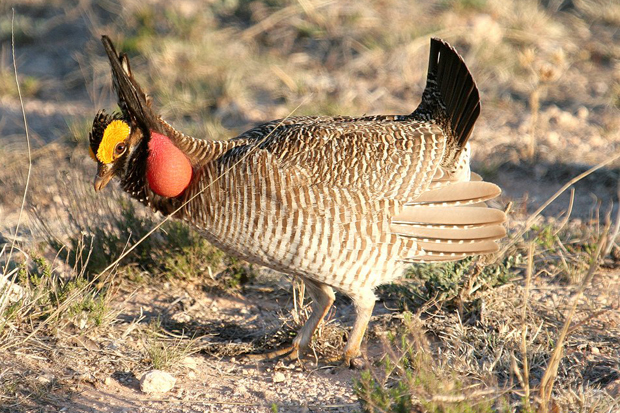
A male lesser prairie chicken
Mark L. Watson / Flickr


A male lesser prairie chicken
Mark L. Watson / Flickr
The declining population of lesser prairie chickens has been an issue for years. It was during the 1990s — and another drought — that the species was first proposed for federal protection.
As The Associated Press’ Maria Sudekum reports, there were about 34,000 lesser prairie chickens inhabiting grasslands in parts of Oklahoma, Kansas, Texas, New Mexico and Colorado when the Western Association of Fish and Wildlife Agencies conducted its 2012 survey.
The 2013 survey shows only half that many — about 17,600 across those five states:
The decline was largely attributed to drought, which also decimated the bird’s population in the 1990s…, said Jim Pitman, small game coordinator [for] the Kansas Department of Wildlife, Parks and Tourism.
“The important thing is the grassland is still there,” Pitman said. Once the grasslands regenerate from wet weather, the bird population will also increase, he said.
There have been a number of attempts to place the lesser prairie chicken in federal protection under the Endangered Species Act since the 1990s. But that idea is met with resistance from some landowners, state wildlife agencies, and energy companies.
Our partners at StateImpact Texas earlier this year looked at how wind farm operators and oil and gas drillers are fighting to keep the lesser prairie chicken off the list. They worry new regulations could hurt business, or halt it entirely.
But Jay Lininger, with the Center for Biological Diversity in Tucson, Ariz., says in the AP story the rare bird needs federal protection now:
“Drought and habitat destruction are devastating the small remaining populations of this magnificent grassland bird,” Lininger said in a release after the survey results were announced. “These vanishing birds need the protection that only the Endangered Species Act can provide if they’re going to survive.”